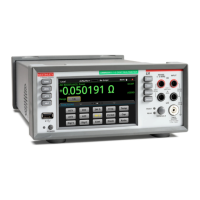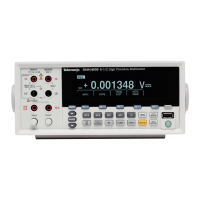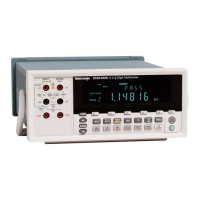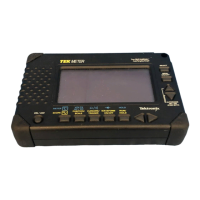7½ Digit Multimeter User's Manual Section 3:
DMM7510-900-01 Rev. C / September 2019 3-15
Identify the instrument
If you have a bank of instruments, you can select the ID button to determine which one you are
communicating with.
To identify the instrument:
1. On the Home page, select the ID button. The button turns green and the LAN status indicator on
the front panel of the instrument blinks. On instruments with a front-panel interface, the System
Communications menu also opens and the LXI LAN indicator on the LAN tab blinks.
2. Select the ID button again to return the button to its original color and return the LAN status
indicators to steady on.
Review events in the event log
Under LXI Home, the Log option opens the event log. The event log records all LXI events that the
instrument generates and receives. The log includes the following information:
• The EventID column, which shows the identifier of the event that generated the event message.
• The System Timestamp column, which displays the seconds and nanoseconds when the event
occurred.
• The Data column, which displays the text of the event message.
To clear the event log and update the information on the screen, select the Refresh button.
Determining the command set you will use
You can change the command set that you use with the DMM7510. The remote command sets that
are available include:
• SCPI: An instrument-specific language built on the SCPI standard.
• TSP: A scripting programming language that contains instrument-specific control commands that
can be executed from a stand-alone instrument. You can use TSP to send individual commands
or use it to combine commands into scripts.
If you change the command set, reboot the instrument.
You cannot combine the command sets.
As delivered from Keithley Instruments, the DMM7510 is set to work with the SCPI command set.
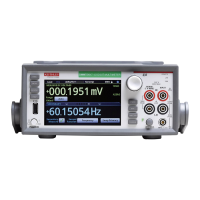
